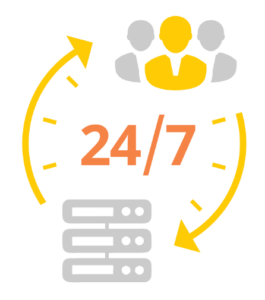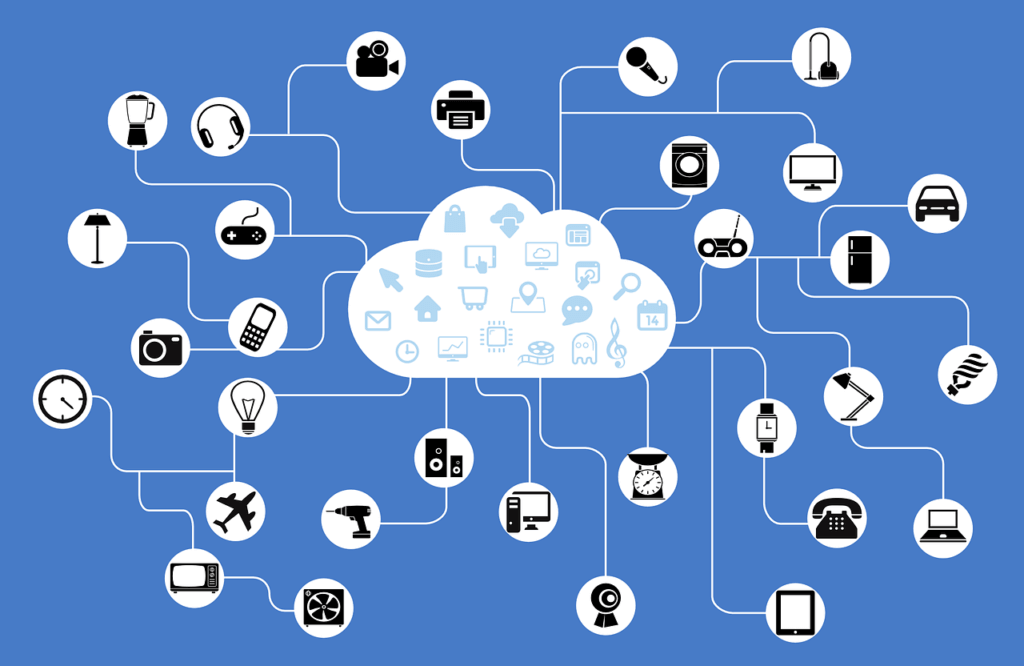Accelerate Success with AI-Powered Test Automation – Smarter, Faster, Flawless
Start free trialThe Internet of Things, aka IoT, industry is thriving due to its versatility and usage at homes and various industrial level applications. IoT framework involves connecting smart devices that collect, transmit, collate, and analyze data. It gives a user the power to remotely manage devices/appliances connected to his/her IoT network. Clearly, it involves a lot of sensitive and private data exchange, which means that the software applications involved should be highly functional and secured. This gives rise to the need for a comprehensive and foolproof testing process. However, there are certain challenges, as listed below, that make IoT testing a difficult task.
Fragmentation

An IoT ecosystem involves a large number of diverse devices, be it mobiles, smart appliances, smart wearable tech. This poses a challenge when designing a test plan to address the compatibility of the different platforms and devices. It will be prudent to keep in mind that any smart device can plug into the IoT at any point in time. Also, the rate at which the technology is changing and advancing, the market sees a lot of new releases every few days. To keep pace with the changes and incorporating them successfully in IoT setup is a daunting task.
A direct consequence of fragmentation is the User Interface testing issue. There could be a scenario where a device that wasn’t simulated and tested connects to the IoT network. Designing and testing for every possible combination of UI on devices pose a major challenge.
Solution
To address this issue, a comprehensive test strategy needs to be defined which covers all possible scenarios.
Various hardware and software combinations can be identified by understanding the end user sample’s usage pattern. Once that subset is identified, testing can be conducted on these combinations.
Cross platform and cross device testing is extremely important.Compatibility testing and Integration testing play a significant role in planning test strategy for a large variance of devices.
Test Diversity

Testing an IoT is all about intensive testing of the functionality, usability, accessibility on heterogeneous devices, and networks. Different devices have different hardware and protocols. It is imperative to ensure that they speak the same language and work seamlessly. Besides this, a large number of sensor interactions, real-time response, a high volume of data exchange, security, and privacy gives rise to the need for designing complex and detailed test cases.
Limitations related to memory, processing power, battery life, etc are the real-world challenges that any IoT infrastructure may face because of the diversity of devices. Simulating testing scenarios for all possible combinations is an uphill task
Solution
Designing such intricate test cases requires a good amount of expertise. If not conducted properly, it will have an impact on the end products which may dent the marketability of the product.
The test-as-a-user approach also helps in building a relatable set of test cases.
Scalability and Interoperability

IoT’s success is related to its stability and hiccup-free device communication. The testing spectrum should ideally cover different types of networks with different bandwidth and configurations. The testing should verify the interoperability of devices in order to have a stable IoT setup. The IoT infrastructure should be able to handle various devices and telecommunication protocols and should be scalable in order to address future needs. A lapse in any of these aforementioned factors has a direct impact on the stability of IoT setup.
Solution
Pilot testing and Interoperability testing should be mandatorily included in test strategy to pre-empt any issues during syncing of new or upgraded devices in the IoT ecosystem.
Pilot testing is targeted to test performance of the IoT setup for a smaller group of people before real product launch. Interoperability testing then checks for issues, if any, when the devices talk to each other.
Regression testing plays a key role too. Any upgrades or additional features should be able to pass regression testing to avoid any bug that may have inadvertently got introduced due to changes.
Network Availability – Always Online

A network connection is a fundamental requirement of an IoT setup. The infrastructure needs to be tested aggressively for network availability, stability, bottlenecks, and data transmission speed. Virtual network simulators can be used for the same. However, there is always an unforeseen element of surprise like, unreliable connectivity, overburdened network channels.
Solution
Network connection testing should be done over a longer period of time with different devices using different ways to connect over different configurations. This helps in identifying possible failure points. This can be done with help of Network Virtualization.
Another way of taking care of down time is to have device clusters in place which connect to a hub. In short, multiple clusters form an IoT ecosystem. In case a hub fails, other clusters remain unaffected.
Real-Time Data Testing

There are certain fields, like healthcare and energy monitoring that need real-time data acquisition and analysis. Designing test cases and then executing them becomes a big challenge, especially when there are many hardware and software related variables involved. Replicating an actual environment becomes a complex task.
Solution
There should be a backup option for offline mode which again needs to be planned, designed and tested in sync with the online mode. An airtight testing must be done to ensure that any drop in connectivity, even for minimal duration, or any intermittent lag in communication is handled properly.
Also, incorporating the provision of having a sensor which can send local notifications in case of loss of connection.
Data Integrity testing and Security testing are important for this since a lot of sensitive data is exchanged over the network.
Security Testing

Smart devices are vulnerable to privacy issues and breaches if proper security testing is not conducted. However, the hardware-software mesh of heterogeneous devices poses a big challenge for security testing. It is also important to keep in mind that any firmware or software upgrades need to be retested for all security aspects. You can read more about “Security testing complemented with complete regression” by clicking here.

Solution
First line of defense is to have security testing protocols in place. Penetration testing and vulnerability scans should be done rigorously at the device level and protocol level.
Next level should be to have a secure way of using API’s at the service layer by conducting API testing to ensure that no breaches are there in case API’s are upgraded or modified.
Detailed and comprehensive network testing should be done at network layer level to find and seal any loopholes vulnerable to network related attacks.
At the user level, it is always a good idea to test for credential related testing functions.
Conclusion
The future market of IoT will be shaped by how much confidence it is able to instill in the customers. The confidence is precipitated when customers are able to use their devices and leverage on their functionality to make their day to day tasks easier. The key to all this is to have an IoT system which had been tested intensively before its market release. The testing team needs to be innovative while designing all possible test scenarios. For this, they need to have a good understanding of requirements as well as the technical knowledge of infrastructure and underlying hardware/software. It will be a good idea to have automation in place for certain repetitive test scenarios and performance testing.
Webomates has an IoT lab setup for functional and Usability testing. Our automation framework has capabilities to support IoT Automated testing, which adds support for Performance testing. We have domain experts who can study the system under test and various protocols that support IoT devices. Our team of experts then apply that study for testing any IoT application behavior with ease.
If you are interested in learning more about the services offered by Webomates then please click here and schedule a demo, or reach out to us at info@webomates.com. You can also avail of a free trial by clicking here.
Tags: IoT

1 reply on “Handling IoT Testing Challenges The Webomates Way”
One of the most crucial component that plays a critical role is the Backend eg AWS-IoT. This is the brain of the IoT setup, this provides a cloud-based mechanism for collecting real-time data, processing, analyzing the data, etc.
This can be better understood by the Alerts systems i.e. mails and SMS that are triggered when the device is not working correctly. Apart from enhancing the feature list of the product, it also provides emergency warning tool eg Excess water flow or leakage in the Water Softeners.